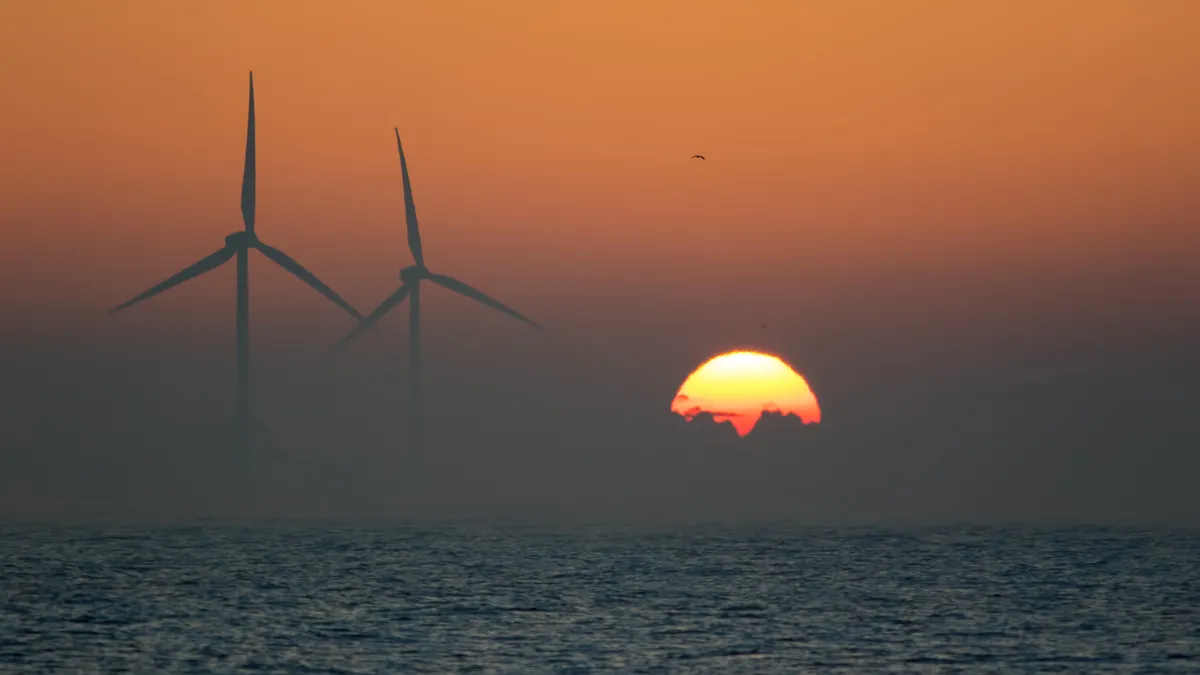Dive Brief:
- The Department of the Interior on Thursday approved US Wind’s Maryland Offshore Wind project, which is expected to deliver up to 2 GW of energy to the Delmarva Peninsula, marking the tenth commercial-scale offshore wind project to receive approval from the Biden administration.
- The White House also issued a fact sheet Thursday noting that the administration has now permitted 15 GW of offshore wind, bringing the U.S. closer to its goal of deploying 30 gigawatts of offshore wind by 2030, and issued a statement from President Joe Biden touting that progress.
- The White House also said that the administration’s approval of the US Wind project “is part of comprehensive Administration efforts to improve the federal permitting process” – including $1 billion in Inflation Reduction Act spending “to hire experts and invest in new technologies to expedite reviews,” as well as the use of executive authority to speed approvals and reforms to the National Environmental Policy Act.
Dive Insight:
“We will continue to partner with industry, Tribes, ocean users, and other stakeholders to support supply chains that are Made in America, incentivize union-built projects, and continue seizing opportunities for additional clean energy technologies,” Biden said.
While 15 GW in offshore wind project capacity has been federally permitted so far, the “total U.S. offshore wind project pipeline now exceeds 80 gigawatts, enough to power more than 26 million homes if fully developed,” the White House said.
“When I came into office, the United States had zero approved offshore wind projects in federal waters, and the industry was struggling to gain a foothold,” Biden said. “But now, following my Administration’s investments in our clean energy future, the private sector has mobilized and the federal government has approved ten offshore wind projects.”
Over the last four years, the developing U.S. offshore wind industry has faced macroeconomic headwinds from inflation, supply chain problems and interest rate hikes, which led to project cancelations and delays. The industry also faces natural barriers in emerging markets like the Gulf of Mexico – which presents the paradoxical challenges of lower overall wind speeds and hurricane risks – and offshore the West Coast, where deep waters necessitate the use of floating wind technology.
“Deep-water areas that require floating platforms are home to two-thirds of America’s offshore wind energy potential, including along the West Coast and in the Gulf of Maine,” said the White House’s fact sheet. The Biden administration set a goal of deploying 15 GW of floating offshore wind capacity by 2035, and also launched an interagency Floating Offshore Wind Shot to attempt to reduce the cost of floating offshore wind energy by more than 70% by 2035.
US Wind’s Maryland Offshore Wind project is being developed in three phases, according to the company. It expects the first phase, MarWin, will deliver around 300 MW of energy to Maryland from 22 turbines located around 20 miles off the state’s shore. The second phase, Momentum Wind, is expected to deliver around 808 MW from 55 turbines more than 15 miles from Maryland’s shore.
“Following the first two phases, build-out of the remainder of the Lease Area would occur to fulfill ongoing, government-sanctioned demands for offshore wind energy,” the Bureau of Ocean Energy Management said in its record of decision approving the project.
US Wind is also developing a long-term monopile production facility, Sparrows Point Steel, at Sparrows Point in Baltimore.
“Sparrows Point Steel will produce the monopile foundations and other steel components needed [for MarWin and Momentum Wind] – and have the capabilities to service the entire U.S. offshore wind market on the East Coast,” US Wind said.














